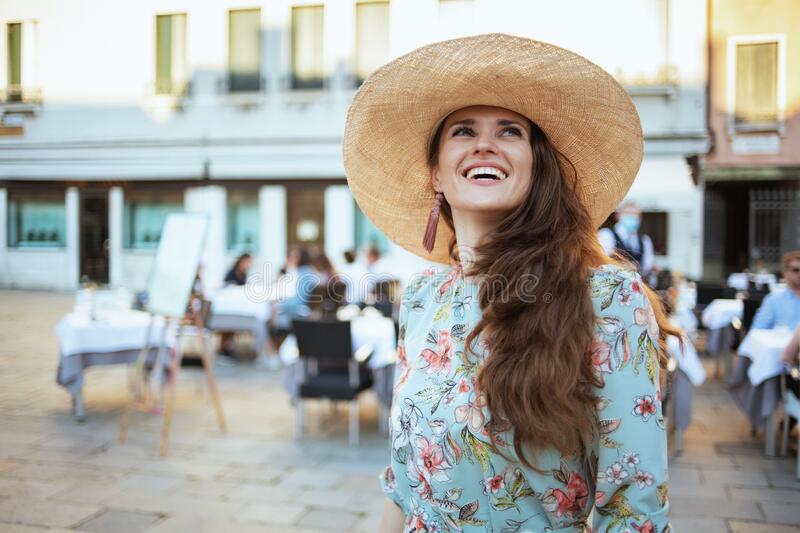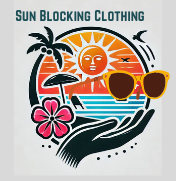
Does your hat protect you from the sun? Here are some guidelines for you to think about when you are getting your sunblocking clothing ready for the next opportunity for fun in the sun.
What A Sun Hat Should Do
- Your sun hat should protect your skin from the sun.
- Wearing a sun hat will help keep you cooler, or warmer in cold weather
- A sun hat helps shade some of the glare from your eyes
- It is helpful if the sun hat makes you feel good about yourself, so that you never hesitate to wear it.
These things are important for men and women when selecting a sun hat to wear as often as you are out in the sun.
Ladies, that beautiful sun-colored hat that looks like a flying saucer may not be the most practical. At least in my part of central Texas. We have too much wind.
There is a hat out there that will protect you from the sun, look good, and be practical for you to wear. Some hats look good but don’t offer as much protection.
The good thing is this may mean that you should have more than one sun hat.
Thinking about looking good, and protecting your skin may require a different approach to hat selection.
So, as you are considering the hat choice, make sure the one that protects your skin, shields your eyes, cools or warms your head, as well as looks good.
You have to wear a hat to benefit from it!
Do Mesh Hats Protect From The Sun?
A mesh hat according to Wikipedia.org:
“A trucker hat, mesh cap, or netback cap is a type of baseball cap.
It is also sometimes known as a “gimme [as in ‘give me’] cap” or a “feed cap” because this style of hat originated during the 1980s.
This promotional give-away from U.S. feed or farming supply companies to farmers, truck drivers, or other rural workers.”
This kind of hat or cap is better than nothing. It usually has a “bill” that will shield the top half of your face. The mesh in the back does little to protect your head.
The cap does nothing to protect your lower face. Everything below your sunglasses will be venerable.
So your relationship with your dermatologist will begin to grow if you choose to wear this kind of sun hat.
Our family’s results of wearing the caps for sun protection have not been good. Maybe the noses have done alright, but ears have paid the price, as well as the back of necks.
There are 2 kinds of skin cancer that most of us deal with. These 2 kinds are easy to see and respond well to early treatment.
basal cell carcinoma (BCC), squamous cell carcinoma (SCC)
Color And Your Hat Selection
Hats’ colors follow the other rules about sun protection clothing. The darker your hat, the more sun it is absorbing and keeping from your skin. If the brim is a proper width, you will get the maximum amount of protection it is capable of.
The statistics are in that having the underside of the brim of your hat in a darker color helps absorb the damaging UV A rays that cause early aging from your face.
This is another safety thing you can look for, especially if your sun hat is a very light or white color that will reflect the rays right down on your face. If you choose a lighter color, you will need to keep up with the applications of sunscreen throughout the day.
If you are going to wear a hat for sun protection, a little information can help you make a better choice. Sure a sun hat can look good, but it is important to go over the safety features as well. This can maximize your skin protection.
Lightweight Or Lacy Sun Hats
Here again, something is better than nothing. However, regardless of the style of hat you choose, protective is more important than decorative.
You do need to block the sun from the skin on your head, face, neck, ears, and nose. That is where Basil Cell carcinomas are first found. These areas are not protected when you are in the sun.
While an airy lacy loosely woven hat may be glamorous, it will do little to protect your skin or your hair from the sun. For some, another hat is like a change of lipstick color or a selection of earrings.
A lacy hat is an accessory that would wear well in the late evenings or early mornings.
Your sun hats should be made of a tightly-woven material. Straws and grasses can be lightweight and tightly woven. Also, the fabric is like a canvas cloth that is tightly woven. This fabric will do a great job of protecting your skin and hair.
Remember the test for determining how sunproof a fabric is:
Hold up to the sun or a bright light blub. Can you see pinpricks of light?
If so, those same pricks of light will be shining on your head. That will allow some sun in. If the brim has pinpricks, you will have too much sun quickly on your face and neck.
So here is where we determine how serious you are about taking better care of your skin.
If you choose a sun hat made from a weave that allows sun through, you are saying you are going to reapply sunscreen every hour and a half or two hours. You must protect your head, neck, and face. The sun can see in the little pinholes.
Has your past shown any responsibility for sunscreen reapplication?
My history shows very definitely that I neglect reapplication. The sun beaming through a loosely woven hat won’t work for me.
How Should A Hat Be Made?
Another critical consideration is what shape is better. The hats that just seem to perch on top of your head offer little skin protection. They may make you feel like a movie star, but they probably don’t protect you.
I wanted a little air room above my head and hair for the sweat to dry on my summertime sun hat. So after checking things out, the “bucket” shape made more sense.
I don’t have one with of the cute bucket ones yet, but my tightly woven straw hat does have a brim that turns down. This does a great job of protecting my skin.
This hat is a plain one that can have brightly colored bands, or “dressed” up with a black or navy hatband. It is a fun way for me to feel a bit of change.
The larger brims are a bit more trouble to manage, and for us in this part of central Texas not at all practical. At least if you only have one.
The smaller brimmed hats may be easier for you to manage, but don’t depend on them to provide much sun protection for your face.
There are excellent wicking features built into some of the hats I used to consider “dorky” (whatever that is) before I understood the purpose of a hat. Now, my opinion has changed, and being able to tie a hat on is important.
However, hats are different sizes and different on your head. Try it on and if it doesn’t feel good, put it back. It won’t be worn, and you won’t enjoy that hat! You need to protect your skin. Having a hat to help will make your job easier.
Do You Wear A Hat When It Is Cloudy?
Yes, it is important to wear a hat when it is cloudy. When there is light there are UV rays. Basics here:
- UVA Rays are the ones that cause your skin to AGE EARLY!
- UVB Rays that result in sunburn.
On cloudy days, the clouds may block a lot of the UVB rays, but those UVA rays are abundant, and because they are not as hot as UVB, you may get careless.
You can have more damage on cloudy days than on bright cloudless ones. It is up to you and how careful you are to start with sunscreen. Enough sunscreen. Leaving the hat on your head.
Both of these are harder to do than I first thought.
Think this hat project through and make the right decisions for you. For your family. There is more to it than grabbing a hat or cap!
Will You Wear A Hat?
Wearing a hat provides instant shade. This is better than wearing nothing on your head. Your hat can increase your cumulative total sun protection factor by at least 10.
With all your hats shortcomings it is better than nothing between you and the sun.
Sun hats are the very first item you should add to your sun blocking wardrobe. You will need to consider your options as this is an important place for sun protection to begin.
Sun Blocking Hats Will Protect Your Skin
A sun blocking wardrobe starts with your hat. These items of clothing will help you stay safer from over-exposure to the sun. They are important.
The 2nd item is a good pair of sun blocking sunglasses.
A long-sleeve loose-fitting shirt is next in importance. Sun blocking materials have improved, and we have many choices.
Your sunscreen is the next important item in your skin protection tool chest.
A good pair of shoes that protect your feet is important as well. Sunburn on the tops of your feet is far too common. Protect your feet and legs.
Adding to your sun block tool chest will ensure safer fun in the sun for you and your family.

Sami’s Take On Does Your Hat “Really Protect” You From The Sun
As we progress in our knowledge of how to protect our skin from the sun your awareness is growing as well. Awareness of the ways you can keep your family safe in the sun.
Our family has been careless in the past, and we all must do a better job of protecting our skin.
The kids proved themselves very well of being capable, during our Covid times, of learning new habits. Often they will change to safer habits quicker than older members of your family.
Teach them to grab their sun hats and sunglasses. A long-sleeve loose-fitting shirt. Make sure they have applied sunscreen.
Helping our kids be more safely independent is important to the overall safekeeping of their skin. It starts with us. A protecting sun hat, not one that just looks good.
There is well-proven evidence that exposure to UVs from the sun can lead to skin cancer.
Broad-brimmed hats, bucket hats with wide brims and the “legionnaire-style hats are effective for sun protection. Your head, ears, face, and neck will stay safer.
These hats with your other skin protection tools will help keep your kids safe as well.
Protecting Our Skin
The World Health Organization assures us that continuous exposure to ultraviolet radiation (UVR) from the sun causes harmful effects on the skin, eye, and immune system.
Wearing a hat that gives good UV protection is an important preventative measure to help reduce these risks, for you and your family.
What hat is best for you?
The hat that will provide shade to your head, ears, face, and neck is best.
A broad-brimmed hat, bucket hats with a wide brim, and legionnaire style hats provide the most protection.
Baseball caps do not protect your neck and ears.
Hats are a useful addition for sun protection of your head, ears, face, and neck.
Hats rarely provide sufficient protection on their own to anyone outside during times where sun protection is advised.
This is because, although they provide direct protection to different areas of the head, ears, face, and neck, it may be difficult to avoid reflecting rays.
This example helped me to understand some of the protection that was or was not available from my hat:
In Australia on a bright summer day? A fair-skinned person like me sitting outside and unprotected?
I would receive enough solar UVR in about 15 minutes to cause sunburn. If I wear a hat with a Protection Factor of 2 or 3, it would take being outside for two to three times as long to get sunburned. (15 min. X 2 or 3)
Sun Blocking Clothing Tool Box
This next statement is obvious I know. Please disregard if you think I am a bit of a stickler for detail. I want you to have all the information you need for better decisions for you and your family.
Your hat will do nothing for the trunk of your body! You will need your long-sleeve loose-fitting shirt to block the sun from your body.
Hats are helpful. A combination of sun-protective measures will be better if a person is outside during times when sun protection is advised.
Hats are more useful against the direct sun. When it is cloudy there are more indirect and scattered solar UV rays. The protection provided by hats may not work quite as well under these conditions.
The Shape Of Your Hat Makes A Difference
The amount of protection provided to different areas of the face will vary. Your nose, forehead, cheeks, neck, and ears depend on the type of hat and the design.
For example, broad-brimmed hats perform better for shading more of the facial areas than baseball caps.
Caps provide reasonable protection to your scalp, forehead, and nose but almost none to your neck and ears.
You have lots of information, how will you use it to protect yourself from the sun?
